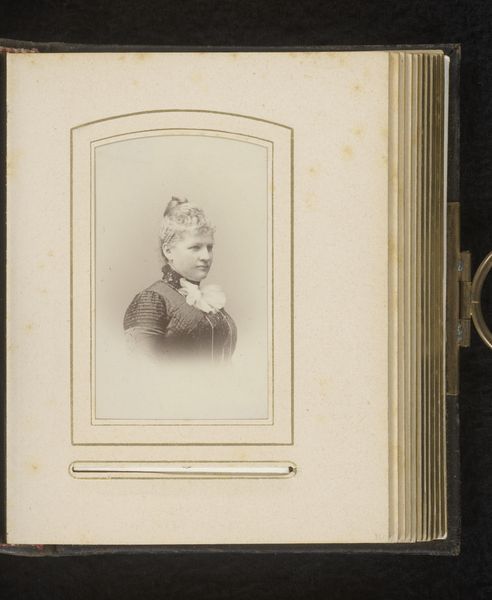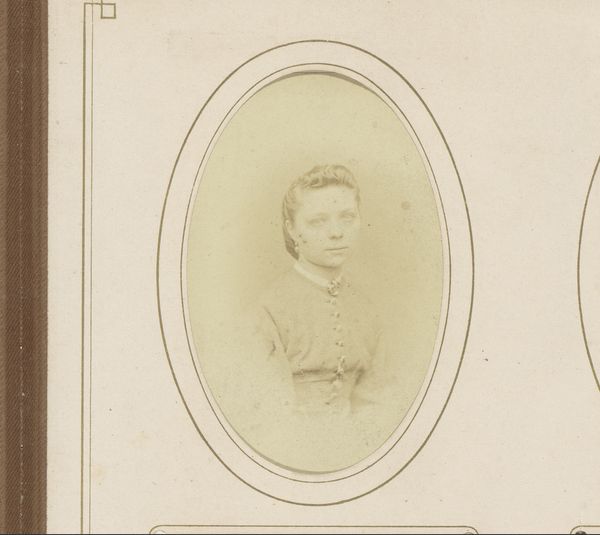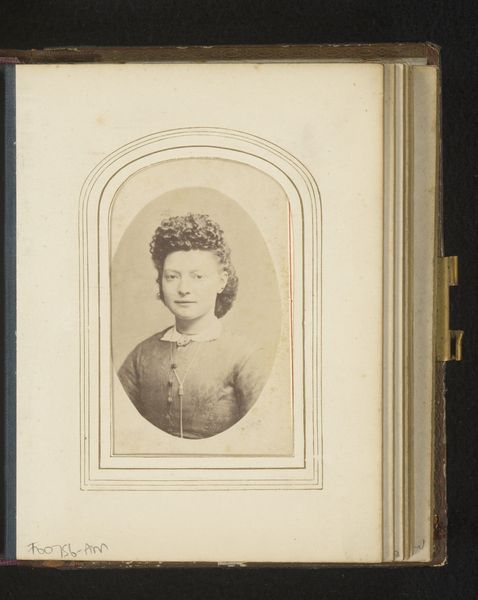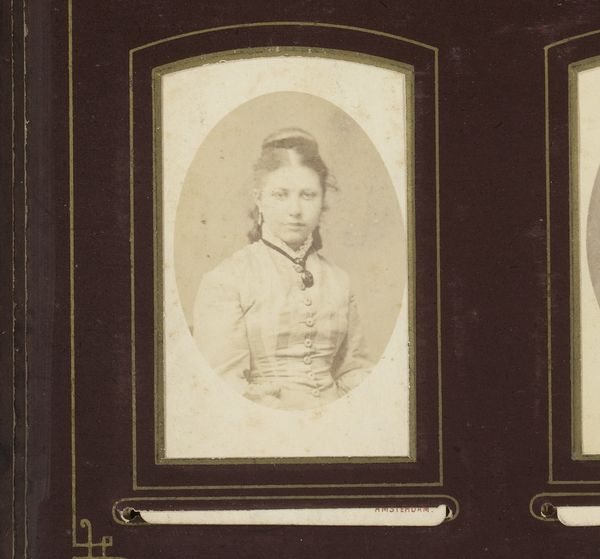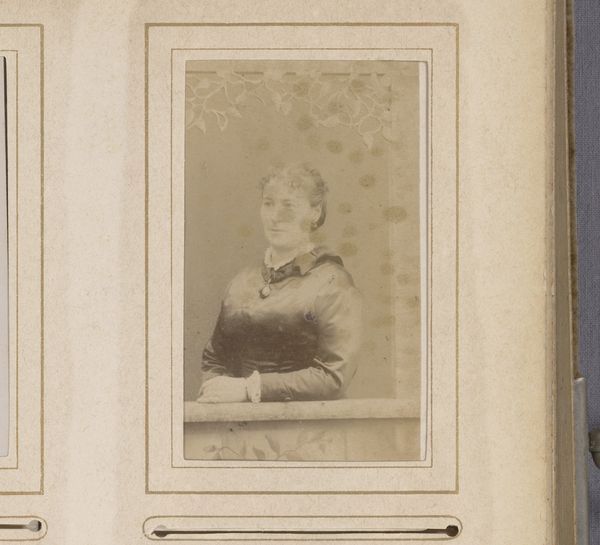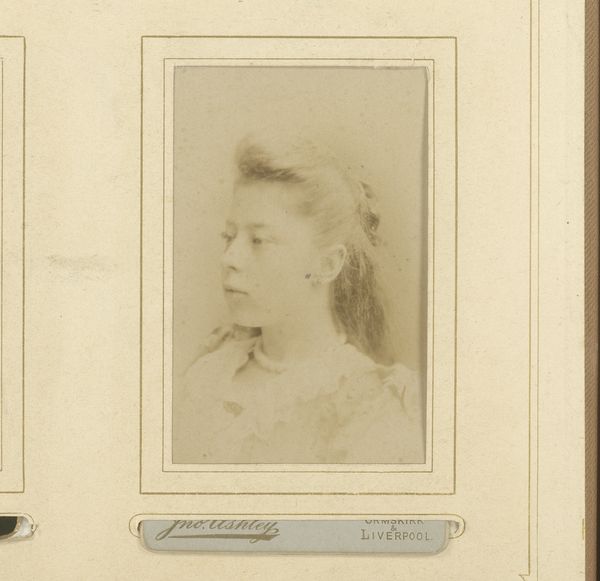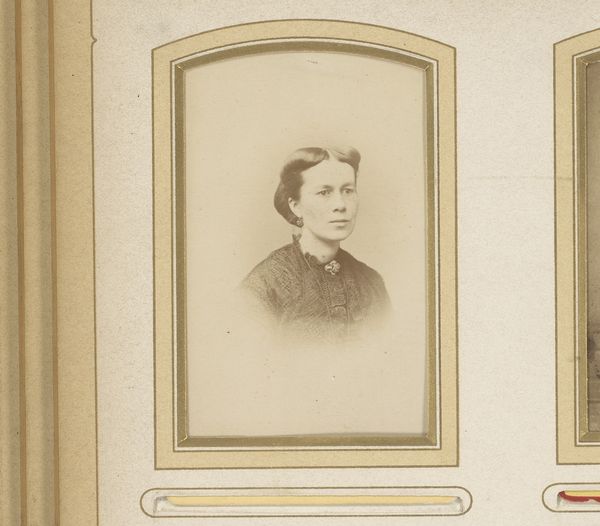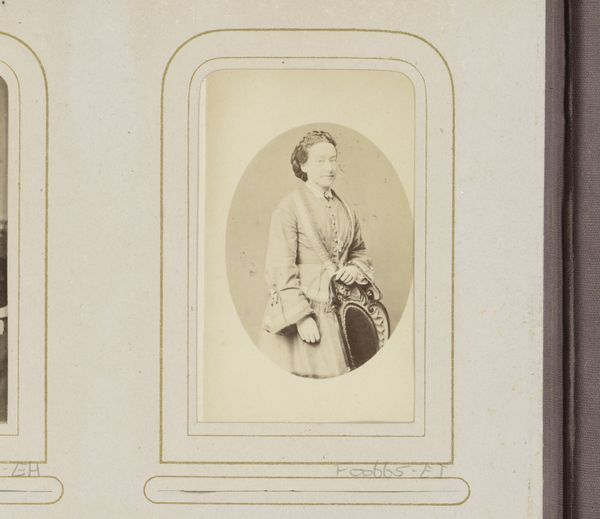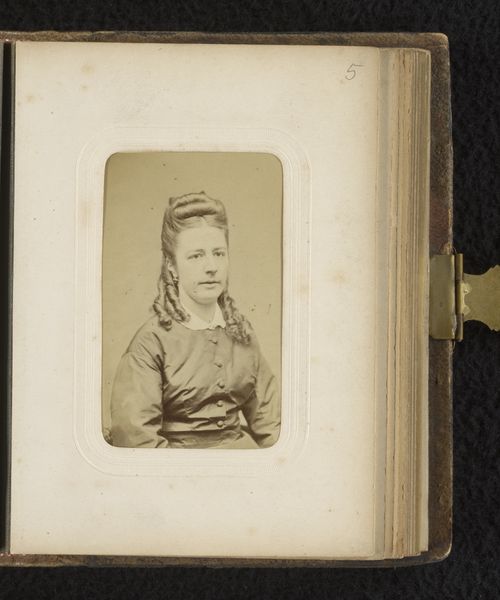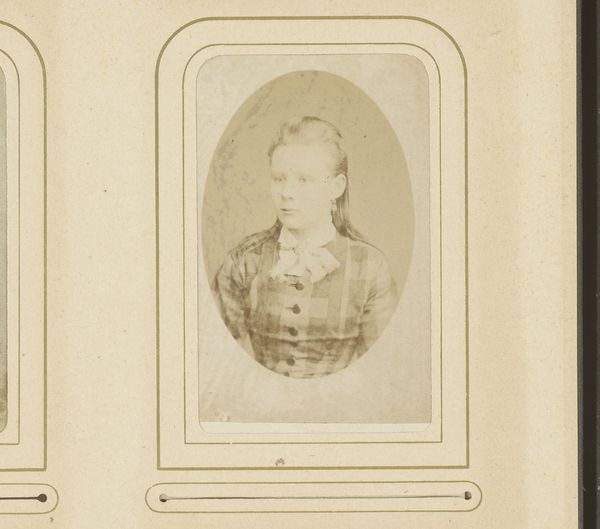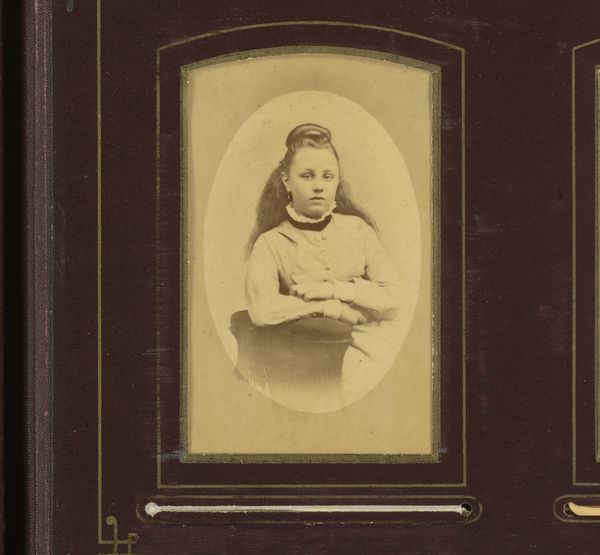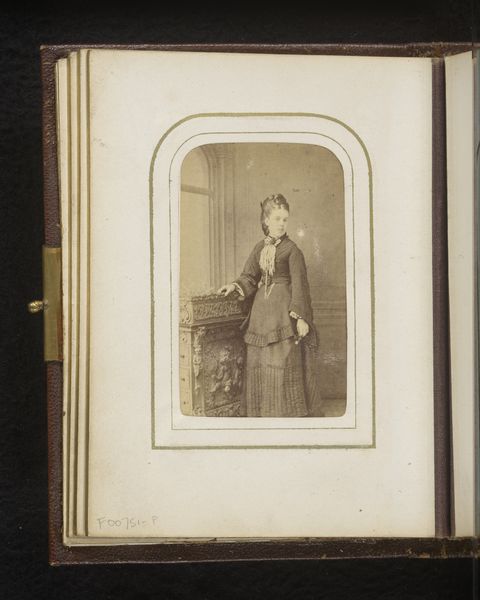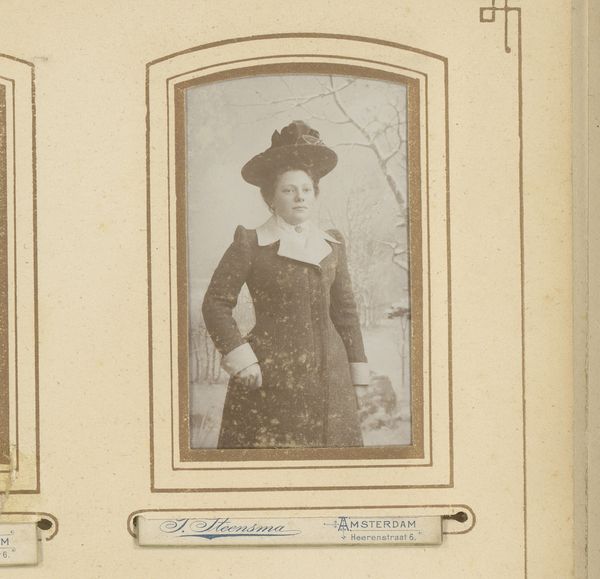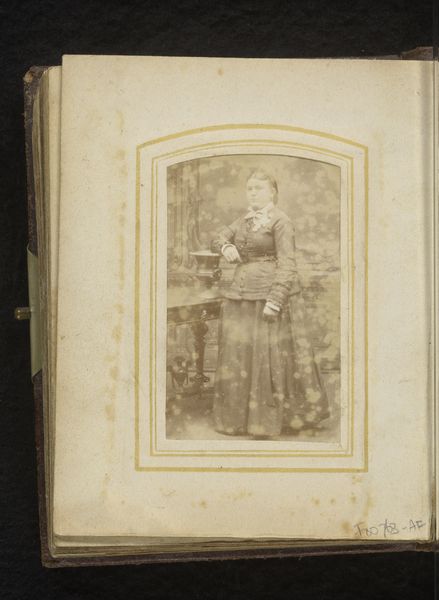
Dimensions: height 82 mm, width 50 mm
Copyright: Rijks Museum: Open Domain
Editor: Here we have Johann Georg Hameter's "Portrait of a Young Woman with Curling Hair," a gelatin-silver print created sometime between 1869 and 1885. It's captivating. What strikes me most is the contrast between the sitter's poised expression and the laboriousness of her intricate hairstyle and clothing. What's your take? Curator: Precisely! Consider the material conditions. Gelatin-silver prints, while seemingly straightforward, involved a complex chemical process, a shift from earlier, more direct photographic methods. What does it tell us about the burgeoning industry surrounding image production and distribution in the late 19th century? Editor: I see your point. It's not just a portrait; it's also evidence of technological and economic shifts in image-making. It wasn't necessarily readily accessible. Curator: Absolutely. Think about who had access to photography at this time. Commissioning such a portrait involved considerable expense. This suggests a specific social class and economic standing. What does this tell us about who had the power to represent themselves and how? Editor: That’s fascinating. It brings a new perspective to the sitter, seeing her less as an individual and more as part of a larger social and economic fabric. I hadn't thought about the act of *producing* the image, and how that, too, shapes meaning. Curator: Precisely! This is where materials become voices. By focusing on the materiality of this photographic process, we gain insight into the economic relationships that made this image possible, offering a richer understanding beyond surface appearances. Do you see any evidence of labor beyond just the making of the photograph? Editor: Well, certainly, the young woman's presentation. There is obviously the labour put in to fix her hair and select her outfit and bow tie. And probably the labour of servants and staff behind the scenes too, facilitating the leisure of that era. It is about power through economic means. Curator: Indeed. The photograph itself becomes a document, reflecting power, labor, and even societal aspiration. Editor: I see the photo now less as a mere captured likeness and more of an historical object of social study. The method of photographic printing itself really brings to the fore issues surrounding labour and capital. Thanks! Curator: My pleasure! Examining art through the lens of material production can reveal fascinating insights, enriching our experience.
Comments
No comments
Be the first to comment and join the conversation on the ultimate creative platform.
